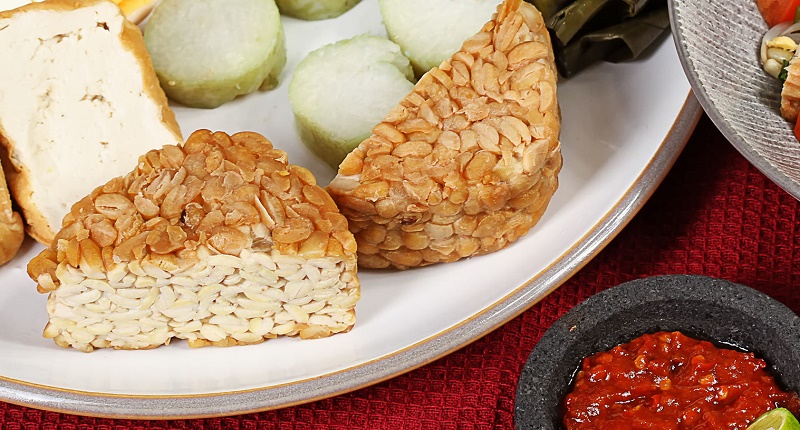Originally from Indonesia, where it is a true delicacy and is fermented in banana leaves (instead of plastic bags), tempeh is considered by this humble chef as one of the best vegetable meats. Soy is digested much better when it is fermented, providing enzymes, high quality proteins, iron and calcium (naturally present in soy) and other essential nutrients.
 It can be eaten stewed, in stews, fried (accompanied with garlic and chopped parsley), battered (breaded) in tacos and in countless preparations.
It can be eaten stewed, in stews, fried (accompanied with garlic and chopped parsley), battered (breaded) in tacos and in countless preparations.
As you will see here we use a rather rare ingredient: the Tempeh starter or tempeh starter. Once the fungus reaches me, I can soak the soybeans, and an hour after it has been soaking, I massage the soybeans a little so that the grain breaks and loses the shell, and I leave it soaking for 7 more hours. (This because I do not get it split and peeled).
Once the soybeans are soaked for 8 to 10 hours (depending on the weather, if it’s hot 8 if it’s cold 10 or 12) I drain it and take it to a pot with enough water to cover the grains. I boil for 30 minutes, drain the remaining water (here I can add the vinegar, which is so that the soy loses a bit of its bitter flavor) and I return it to the fire a little more so that it dries a little.
Once the soy dries a little, I let it warm up to 35 / 40ºC (not hot, let’s say) I add a small teaspoon of the starter, mix well so that the powder is well distributed throughout all the grains, I put it inside a sachet (18 × 28 cm apx.) I close the bag and make little holes for it to breathe. I leave it in a warm place for 3 days and it is ready.
Store in the refrigerator for up to 10 days, frozen for several months. Tempeh can be made with mung beans, rice, and other legumes or grains. The half rice, half soy mixture is very good, you just have to replace half of the soy with boiled and drained rice. It is also very good adding a cup of peeled raw sunflower seeds.
It seems delicious to me, but there are many people who cannot stand the taste or the texture, they try and tell me.
How to make Tempeh – healthy fermented soy food.
Basic tempeh:
Ingredients.
600 g of yellow soybeans, best shelled.
5 tbsp. white or apple cider vinegar.
1 tsp tempeh starter.
Water Amount needed.
Method.
Soak the soybeans for at least 8 hours, drain the water and put the soybeans and vinegar in a pot together, add water to cover the soybeans and boil over high heat, once it begins to boil, lower the heat to low and cook until all the water is used up, make sure that the water has been completely consumed stirring with a wooden spoon. Turn off the heat and let the seeds cool until they are warm, but not too cold. Add a teaspoon of the ferment and mix very well for 1 minute, with a wooden spoon. Distribute the preparation into 3 plastic bags of 18 x 28 cm and close the bag (I use a sealer to also remove all the air from inside), make several holes with a fork, or with a tooth pick (or toothpick) so that the ferment can breathe and let it rest in a warm place in the house for at least 3 days. After 48 o’clock, if the temperature has not changed too much and remains at an average of 37ºC, it will be observed that the tempeh surface begins to appear white and the block can be manipulated without deforming. When the entire surface is white the tempeh is ready. It can be frozen, in the fridge or refrigerator it will last a week. Some dark or unwanted coloration may be observed due to contaminating agents, that is why asepsis is very important when preparing tempeh. The perfect tempeh is one that does not have color differences or dark spots. If this happens, the affected part can be eliminated and the rest can be consumed without problems.
It can be eaten raw in salads or cooked in stews or fried. It is easily replaced in recipes that contain tofu or vegetable meats.
